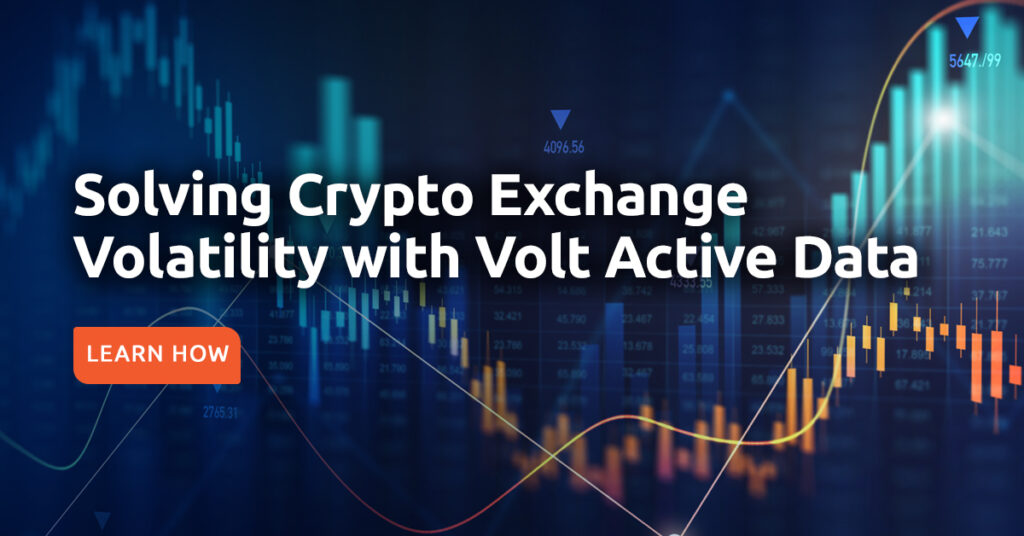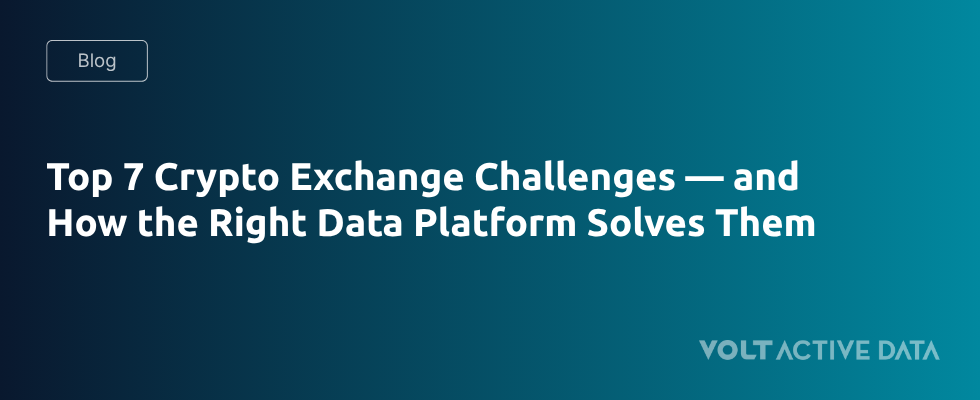Key Takeaways
- Order Management System (OMS) meltdowns occur under High-Frequency Trading (HFT) loads due to unpredictable and bursty workloads, leading to missed trades, slippage, and fairness violations.
- Payment system latency breaks the user experience in crypto exchanges, causing confusion and inconsistency due to delays in reflecting trades, payments, and fee deductions.
- Instant settlement pressure in futures trading requires real-time updates to wallet balances and risk metrics, as delays can expose exchanges to systemic risk and margin errors.
- Auto-liquidation engines face stress during market volatility, where delays in liquidation execution can lead to major liabilities for the exchange, necessitating automated and parallel processing.
- Slow fraud management systems fail to make a difference, as fraud attempts occur in milliseconds, requiring real-time detection and continuous monitoring to prevent financial losses and maintain user protection.
The crypto exchange world moves at lightning speed. Between high-frequency trading (HFT) bots, real-time payments, instant settlement, and continuous regulatory pressure, the infrastructure underneath an exchange is constantly under strain.
Yet most performance breakdowns, failed trades, and user frustrations stem from a common root cause: data platform limitations.
From inconsistent wallet updates to failed margin liquidations, the wrong data foundation can cost exchanges not just revenue, but also user trust and regulatory compliance.
Let’s break down the top 7 challenges crypto exchanges face today — and how the right data platform solves them.
1. Order Management System (OMS) Meltdowns Under HFT Load
In the HFT era, a single user can trigger thousands of trade operations every second — all algorithmically driven, often focused on specific trading pairs during market volatility. The result is unpredictable, bursty, and highly skewed workloads.
Why it matters:
- A lagging OMS means missed trades and slippage — unacceptable for VIP HFT clients who contribute significant revenue.
- Fairness violations, such as failure to maintain FIFO order, damage trust and can lead to disputes.
- Database partition hotspots form when bots overwhelm specific symbols, leading to locking, deadlocks, and throughput bottlenecks.
How a modern data platform helps:
- Extreme throughput: Able to handle millions of operations per second without degradation — even under skewed traffic.
- Ultra-low latency: Ensures OMS decisions are made in single-digit milliseconds, maintaining a competitive edge.
- Smart partitioning: Dynamically balances workloads to avoid hot partitions and optimize concurrency.
- Deterministic trade matching: Real-time consistency and time-priority preservation, even under massive load, ensuring fair execution for all.
2. Payment System Latency Breaks the User Experience
In crypto, every trade impacts user balances. Payments, fee deductions, and collateral movements must be reflected instantly. Any delay introduces confusion or worse — inconsistency.
Why it matters:
- Traders, especially leveraged users, expect real-time balance accuracy for risk management.
- Delayed updates can lead to over-trading, margin errors, or user disputes.
- Fragmented systems often lead to eventual consistency, causing momentary ghost balances.
How the right data platform helps:
- High concurrency support: Can process thousands of wallet operations in parallel, without performance loss.
- ACID transactions at scale: Guarantees every update is accurate, durable, and immediately visible.
- Event-driven architecture: Triggers downstream logic (e.g., fee settlement, margin adjustments) automatically with zero delay.
Atomic operations: Eliminates the risk of double-spends, partial updates, or balance mismatches.
3. Instant Settlement Pressure in Futures Trading
Futures trading adds a layer of complexity with leverage, dynamic funding rates, and instant settlement. Traders expect real-time updates to wallet balances, PnL, and risk metrics — without delay or error.
Why it matters:
- Traditional T+1 settlement cycles don’t exist here. Delays in futures settlement could expose the exchange to systemic risk.
- Wallet balances need to reflect real-time PnL changes, otherwise traders could unknowingly breach margin thresholds.
- Multiple margin modes (isolated, cross) require fast, consistent updates to ensure correct liquidation logic.
How a capable platform handles it:
- Real-time calculations: Margin usage, funding rate adjustments, and unrealized PnL updates performed continuously — often multiple times per second.
- Seamless integration between trading and wallet systems: All components share a single, consistent source of truth.
- Scalability: Able to track thousands of positions across thousands of users simultaneously without degradation.
- Resilience under volatility: Maintains deterministic performance even during sharp price movements.
4. Auto-Liquidation Engines Under Stress
When market volatility hits, exchanges must react instantly to prevent losses. A well-designed liquidation engine closes positions the moment a margin call is triggered — no human intervention required.
Why it matters:
- During a crash, hundreds or thousands of accounts might breach margin thresholds at the same time.
- Any delay in liquidation execution can turn small losses into major liabilities for the exchange.
- Liquidation logic must be faultless — one bad update can create irreversible inconsistencies.
How the right data architecture makes it work:
- Automated liquidation triggers: Logic runs in-line with data ingestion, enabling near-zero delay.
- Parallel processing: Supports concurrent liquidations across multiple users, pairs, and positions.
- Atomic wallet and margin updates: Ensures funds are adjusted with no race conditions or data corruption.
- Fail-safe reconciliation: In the event of failure, the system can rollback or retry cleanly, without user impact.
5. Fraud Management that’s Too Slow to Make a Difference
Fraud attempts often occur in milliseconds. Whether it’s a suspicious withdrawal, unusual bot behavior, or insider trading, real-time detection is key. Reactive or batch fraud analysis simply can’t keep up.
Why it matters:
- Fraudulent activity that goes undetected — even for a few seconds — can result in massive financial losses.
- Users expect protection from account takeovers, wash trading, and withdrawal fraud.
- Regulatory frameworks are increasingly demanding proactive fraud prevention, not just post-incident reporting.
Real-time fraud protection requires:
- Continuous monitoring of all user transactions and behaviors as they happen.
- Dynamic risk scoring: Evaluate transaction context (size, origin, history) to flag anomalies.
- Machine learning-driven pattern recognition: Detect deviations from normal trading behaviors in real time.
- Automated mitigation: Instantly freeze accounts or block transactions when high-risk activity is detected — no delay, no manual review needed.
6. Compliance Delays That Risk Regulatory Trouble
With regulators clamping down on crypto globally, compliance can’t be an afterthought. KYC/AML checks, transaction monitoring, and suspicious activity reports must be baked into your infrastructure from day one — and they can’t slow you down.
Why it matters:
- Compliance gaps lead to multi-million-dollar fines, account bans, and loss of operating licenses.
- KYC and AML checks must operate without degrading user experience or system performance.
- Regulators are increasingly demanding real-time monitoring and alerting, not just nightly reports.
What a real-time-ready data layer offers:
- Always-on monitoring of all transactions and user behavior.
- KYC/AML integration with external verification systems, applied on ingest.
- Real-time alerting and rule-based flagging, built directly into the data processing layer.
- Auditability and reporting support for internal and external compliance needs.
7. Infrastructure Fragility During High-Volatility Events
Crypto markets are volatile by nature. Unexpected events — like a sudden BTC crash — can drive massive surges in trading activity. Exchanges without a resilient architecture experience system slowdowns, trade rejections, or even downtime when it matters most.
Why it matters:
- HFT traders and institutional clients will walk away from an exchange that can’t guarantee uptime under pressure.
- Even a few minutes of downtime during a crash can result in millions in lost trades, lawsuits, or user exodus.
- Legacy systems crack under pressure due to inflexible scaling, traffic skew, and poor concurrency handling.
The anti-fragile platform checklist:
- Real-time stream ingestion + transaction handling in the same system — no patchwork of tools or message queues required.
- Horizontal scaling with active-active deployments to balance load and ensure failover resilience.
- Predictable low latency, even during 10x volume spikes.
- Built-in traffic-skew mitigation through smart data partitioning and conflict-free concurrency control.
Final Thoughts
Crypto moves fast. Exchanges need to move faster — but only with complete precision, consistency, and resilience.
From OMS to payments, from liquidations to compliance, your exchange depends on one thing: the ability to process massive volumes of real-time data, instantly and accurately.
The right data platform makes it possible. The wrong one makes it painful.
At Volt Active Data, we help leading exchanges build infrastructure that can handle the realities of modern crypto trading — high-frequency loads, instant settlement, dynamic margining, and real-time fraud protection — all without compromise.
Let’s talk about how Volt can future-proof your exchange.



